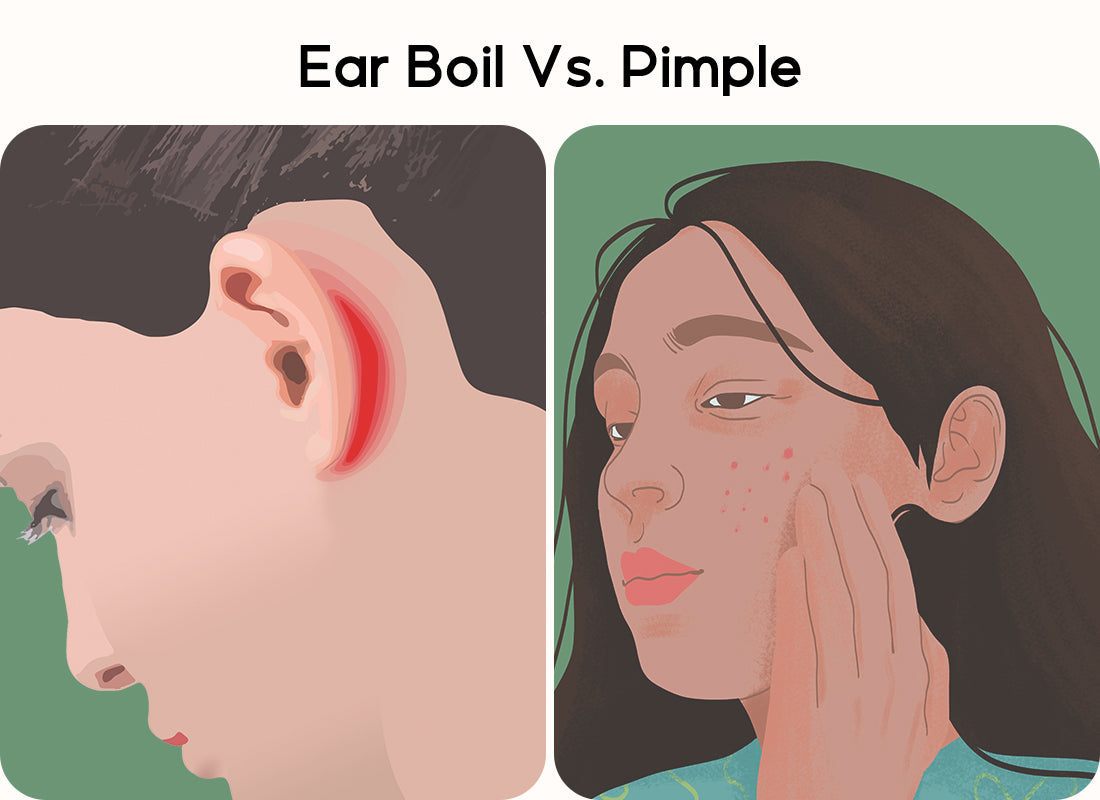One of the common habits of your pets, especially dogs and cats is to scratch their ears. Although scratching ears once in a while is nothing out of the ordinary, scratching them too often might signify that your dog has a problem with his ear canal.
Cautious pet owners never let anything harm their little babies. So, they look into the ears of the dogs to find what might be causing itching in the ears. Two of the most common causes of ear itching include dog ear mites and ear wax.
While both appear similar and difficult to differentiate, their features, symptoms, health concerns, and thus the treatment are entirely different. Therefore, let us talk about dog ear mites vs. ear wax.
Table of Contents
- Part 1: What are Dog Ear Mites?
- Part 2: Understanding Ear Wax in Dogs
- Part 3: Dog Ear Wax Vs. Ear Mites
- Part 4: Diagnosis and Treatment for Dog Ear Mites
- Part 5: Managing Excessive Ear Wax in Dogs
Part 1: What are Dog Ear Mites?
Dog Ear Mites
Ear mites, also known by their scientific name Otodectes cynotis, are small skin parasites with a size of 1 to 2 mm. These tiny insect-like creatures live on the skin of the ears both inside and outside in pets like dogs.
Furthermore, ear mites that invade the skin of the dogs mostly belong to the Psoroptidae family of mites.
Dog Ear Mite Infestation
Dogs get ear mites by their transmission through skin-to-skin contact with another animal having ear mites. After invasion, mites go to the ear canal and lay eggs inside the ear and on the skin surrounding the ears. These eggs hatch and form new mites.
This cycle continues and your dog’s ears get countless parasites. When these parasites use the superficial layer of the skin, skin oil, dead skin cells, and other debris, ears become inflamed.
As a result, your dog experiences the symptoms of ear mites.
Symptoms of Dog Ear Mites
These mites are so small that they are difficult to be seen with the naked human eye. However, the symptoms given below can give you an idea if your dog has ear mites.
- Frequent scratching around the ears signifying ear irritation
- An abnormally colored dark and sticky discharge from the ears
- Foul-smell from the ears
- Continuous side-to-side movement or shaking of the head
- Increased shedding of the hair in the region surrounding the ears
- Visible swelling of the skin around the ears
Part 2: Understanding Ear Wax in Dogs
Now, let us understand ear wax, its function, and more.
Ear Wax
Ear wax, also known as cerumen, is a normal production of a sticky yellowish substance in the ears. In addition to secretions from the glands in the ears, ear wax accumulates dead skin cells, fallen hair, and debris that gets entry into the ear.
Humans have this ear wax and so do pets like dogs. However, the amount of its production and its removal can differ from one dog to another.
Functions of Ear Wax
If you know about the functions of ear wax in humans, let us tell you that its functions in dogs are also similar. The major function of ear wax in dogs is to lubricate the skin of the ears and prevent it from drying out.
That is not all as ear wax plays a role in maintaining the first line of defense in the ears of the dogs. It prevents microbes, dust, and other impurities from entering into the ear and reduces the risk of infection.
Furthermore, it keeps the ear canal clean with a well-balanced cleaning mechanism of the ears.
Normal Vs. Abnormal Ear Wax
Ear wax in dogs is normally yellow to brown and has no odor. Also, its texture is soft and its consistency is sticky. On the other hand, here are a few signs of abnormal discharge,
- An increased discharge of wax from the ears
- The green, gray, or black color of the wax
- Association of a bad odor with the wax
- Signs of ear discomfort in the dog
Part 3: Dog Ear Wax Vs. Ear Mites
As mites are nearly invisible to the eye and can appear like wax, let us learn to differentiate between dog ear wax and ear mites.
General Characteristics
Ear mites are tiny microbe-like parasites that live in the ear canal and feed off the skin of the ears. They are an abnormal finding in the ears of the dogs and can make the lives of your baby painful.
On the other hand, wax is a normal finding in the ears and it is there to protect the ear canal. However, excess wax can cause discomfort as well. There is no way to differentiate between the two conditions by merely looking at your dog’s ears with the naked eye.
Symptoms
Although we have mentioned it already, here are some other symptoms of dog ear mites.
- A dark brownish discharge from the ears that form crusts on the skin
- Visible redness and swelling around the ears
- Loss of hair on the ears
- Presence of pus if the condition worsens
- Painful expressions on your dog’s face when you touch the ears
The symptoms of abnormal ear wax are also mentioned above. It is important to note that pain, skin redness, movements of the head, and loss of hair are more common with ear bites in contrast to ear wax.
Importance of Expert Opinion
While ear wax is nothing to worry about, dog ear mites are a serious disease as they can lead to perforation of the eardrum of your pet and spread to your other pets as well.
Therefore, it is necessary to get it diagnosed appropriately. Moreover, it is likely that you cannot assess and diagnose the condition by yourself. So, seek veterinary care for the optimal health of your baby.
Part 4: Diagnosis and Treatment for Dog Ear Mites
Once you suspect that your pet has ear mites, the first thing is to go to his veterinarian.
Diagnosis
As ear mites are not visible to the naked eye, the doctor will use an endoscope or an otoscope to look inside your dog’s ear. At times, mites can be diagnosed by this examination.
However, the veterinarian might have to conduct a microscopic exam of the content from your dog’s ear. In this way, even the smallest mites can be diagnosed.
In addition, contact history and clinical signs are also important in diagnosis.
Treatment
The treatment options for mites in your dog’s ear include,
- Over-the-counter ear mite treatment: Over-the-counter treatment includes drops and other remedies to clean the ears of your dog along with some ear mite treatment.
- Prescription treatment: In prescription treatment, the vet recommends medicines and drops to kill the ear mites.
- Topical solutions: The last treatment option for ear mites is ear drops containing pesticidal agents like Macrocyclic lactones.
Efficiency of Different Treatment Options
If you have read this article thoroughly, you must be sure that mites are small organisms. Home remedies or over-the-counter treatment options are often insufficient to deal with this contiguous disease.
You need something that can help your pet heal as soon as possible. Therefore, get your dog checked by the doctor and follow his instructions for adequate treatment.
Part 5: Managing Excessive Ear Wax in Dogs
Prevention of the Ear Wax in Dogs
While ear wax is normal, it can accumulate and make your dog irritated. Therefore, it is best to prevent the accumulation of excessive wax in the ears of your dog. You can do so by,
- Checking the ears of your dog regularly
- Cleaning the ears with ear wipes having disinfectant and soothing agents in it
- Getting his grooming sessions done often
Treatment of Ear Wax in Dogs
If your dog has already accumulated excessive wax, here are some options to treat it.
- Use over-the-counter pet ear drops to soften the wax from your dog’s ears
- Use a cleaning solution to irrigate the ear and remove this wax from the ears
- Seek help from experts, when needed
Need of Veterinarian's Opinion
Lastly, here are some symptoms when you should get the ear wax removed by a vet.
- There is a risk of infection or ear mite infestation along with the excessive wax
- The wax is hard and impacted
- The skin and fur around the ears is becoming dull
- There is discharge from the ears
- Wax has a dark color
Conclusion
Ear wax is a normal yellow to brown soft substance present in the ear that is essential for maintaining health. On the other hand, ear mites are parasites that drive nutrition from dog’s skin.
While the appearance and symptoms of both conditions can be similar, ear mite infestation is a serious condition requiring proper treatment by a veterinarian. However, you can treat excessive wax at home.
















Leave a comment
All comments are moderated before being published.
This site is protected by hCaptcha and the hCaptcha Privacy Policy and Terms of Service apply.